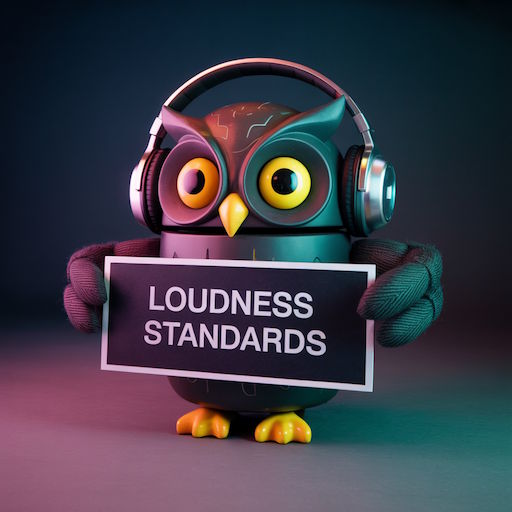
In addition to filter design verification, APU plug-ins undergo a suite of automated analysis tests. These tests cover aspects such as ballistics, LUFS compliance, channel linking behavior, and more.
Behind the scenes of audio software development
December 11, 2025

In addition to filter design verification, APU plug-ins undergo a suite of automated analysis tests. These tests cover aspects such as ballistics, LUFS compliance, channel linking behavior, and more.
December 11, 2025

The filters designed for APU plug-ins undergo a very detailed design and validation process to make sure they are precise and clean. In the interest of transparency, I'm providing some of the artifacts of this design and validation process here.
November 26, 2025

The APU Loudness Series of plug-ins support a variety of global loudness targets for broadcasting and streaming.
These standards define target loudness levels in LUFS as well as maximum true peak limits in dBTP.
The following table provides a quick reference for various broadcasting and streaming loudness targets.
Click on a target to view detailed metering and compliance settings.
November 22, 2025

"How would you describe the difference in use-cases between TrueGain and Contour?"
TrueGain and Contour are both based around the idea of an equal-loudness contour.
July 09, 2025

Designing and implementing the TrueGain plug-in has involved creating a large number of FIR filters
with very tight frequency response requirements. For TrueGain in particular, there are thousands of individual filters which give the plug-in its unique capabilities. There
are minimum and linear phase variations of many different sample rates and many different frequency-response contours.
The naive approach of packaging all of these filters would result in massive download and installation sizes. Because plug-ins are typically self-contained, this means
all the filters need to be packaged for macOS, Windows, x86, x64, ARM, VST, AU, AAX, Standalone application. Even with some basic optimizations, this could
easily result in GBs of downloads.
May 22, 2024

If you've ever wondered why a mix sounds different at low versus high playback volumes, you're bumping into a century-old psychoacoustic phenomenon: the Fletcher-Munson curves, also known as equal-loudness contours. These curves describe how our ears perceive loudness differently across frequencies, depending on sound pressure level (SPL). While they have evolved over time into more refined ISO standards, the original Fletcher-Munson data remains a seminal contribution to both audio engineering and psychoacoustics.
April 02, 2024

Audio Units can be tricky to work with as they are a bit notorious for holding on to old versions you thought you had already removed,
failing to load anything at all, and providing little information suitable for diagnosing. No doubt millions of users have banged their
head against this issue and there is little help to be found other than to keep rebooting, keep refreshing, crossing your fingers that
it works.
So with all that said, here is a set of commands which have so far given me the best results:
January 23, 2024

Although the relatively long window durations of LUFS and RMS are useful for capturing the audio's dynamics accurately, the relatively slow response times can lead to artifacts in certain scenarios. For example, when the audio is first played, the initial loudness measurements will be very low. This is because the window is initially filled with silence, weighing the measurements down. This ultimately leads to a delay in the measurement response, which ultimately can prevent the initial transient from being compressed at all.
October 12, 2023

In my previous blog post about LUFS, we delved
into some details of the LUFS algorithm. One of the key elements of the algorithm is the calculation of the
sum of all amplitudes within the audio waveform. For the purpose of this discussion, we'll refer to this sum
as the energy of the waveform.
When measuring LUFS, we typically focus on a continuous stream of measurements. This approach allows us to
observe the loudness fluctuations over time, providing insights into the audio's dynamic range.
October 06, 2023

When working with audio, there often arises a fundamental need for an objective way to measure loudness. Historically,
RMS (Root Mean Square) has served this role, providing a good first-order approximation. This style of measurement
quickly became ubiquitous across audio tools of all sorts. Even though it has limitations, which we'll get into,
it is a whole lot better than nothing.
Technology has advanced over time and more accurate forms of measurement have become feasible. One of the leading algorithms
for this purpose today is LUFS. Its use is becoming increasingly common, especially given its adoption by many popular streaming
platforms.